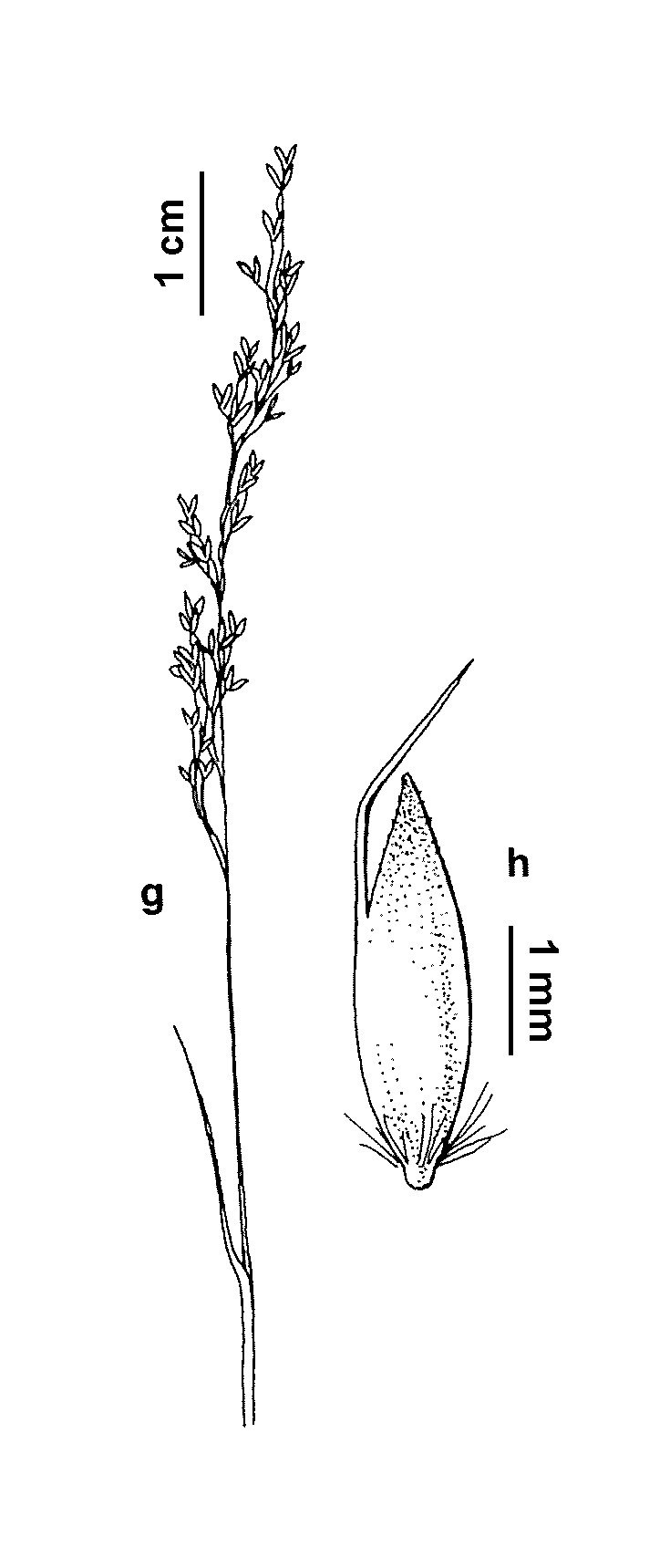Deyeuxia rodwayi
VickeryTufted or (occasionally) stoloniferous perennial, culms erect or rather weakly ascending, to 90 cm high. Leaves smooth, scabrous or pubescent; blade flat, to 35 cm long and 4 mm wide (rarely wider); ligule laciniate, 1–4 mm long. Inflorescence a sparse to moderately dense panicle with rather short, appressed or spreading branches, 8–25 cm long. Spikelets 3–4 mm long, plump, usually green but sometimes purplish; glumes gaping at maturity, acute, subequal, scabrous along the keel; lemma subequal to spikelet, acute, finely scabrous, awned from midway to within 0.5 mm of apex; awn readily deciduous, rather stout and twisted at base, 1.5–3 mm long; callus hairs to c. 1 mm; rachilla bristle 0.3–1 mm long, glabrous or sparsely hairy; anthers mostly 0.5–1.2 mm long. Flowers Nov.–Mar.
VVP, GipP, OtP, CVU, GGr, NIS, EGL, EGU, WPro, HSF, HNF, OtR, Strz, MonT, HFE, VAlp. Also Qld, NSW, Tas. Occurs principally in tall mountain-forests of the east, up to c. 1200 m, with western outliers in the Grampians, Mt Cole, Otways and Mt Macedon.
A variable species in habit, inflorescence and development of the awn. Western populations (e.g. Grampians, Mt Cole) are notable for having densely pubescent vegetative parts.
See notes under D. frigida.
Walsh, N.G. (1994). Poaceae. In: Walsh, N.G.; Entwisle, T.J., Flora of Victoria Vol. 2, Ferns and Allied Plants, Conifers and Monocotyledons, pp. 356–627. Inkata Press, Melbourne.
 Spinning
Spinning

